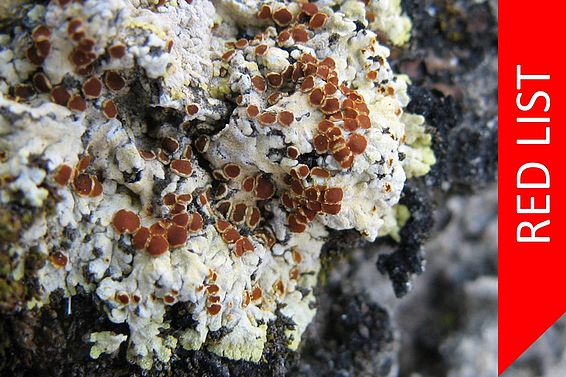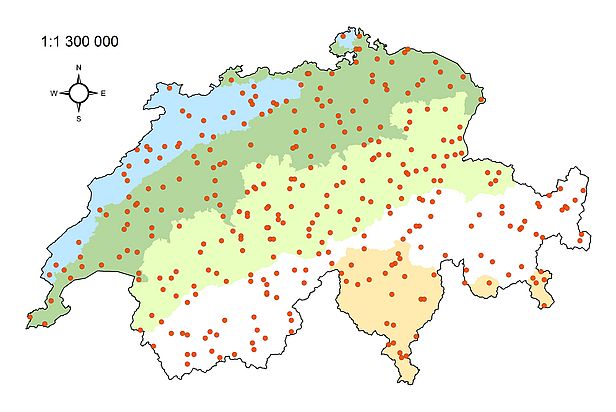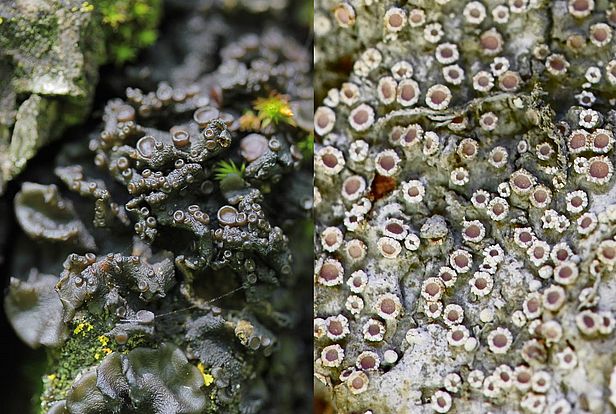Revision of the Red List 2002
Michael Dietrich
Markus Gabathuler
Christine Keller
Gesa von Hirschheydt
2017 - 2024
Cooperation FinancingRevision of the Red List 2002

The goal of this project is to update the Red list of threatened epiphytic and terricolous lichens in Switzerland from 2002. The lignicolous lichens are newly added to the list.
The project consists of two phases:
1) fieldwork for data collection (2018 - 2023)
2) data analysis and compilation of the Red list according to IUCN criteria (2023 - 2024)
Research questions
- What is the conservation status of epiphytic, terricolous and lignicolous lichen species in Switzerland?
- Has the conservation status of lichens changed since the Red list of 2002?
- Have conservation measures led to an improvement of the status of the respective target species?
The updated list will primarily document the conservation status of lichen species in Switzerland. It will, however, also give insights into the frequency and status of habitats on which lichen species depend. The updated Red list will thereby be the basis for an update of the list of nationally prioritized species and can be used to take conservation actions.
A-plots (completed)
500 plots of 500 m2 size have been distributed across Switzerland, stratified according to biogeographic region, vegetation level and vegetation unit (forested/not forested). Within the plots, the presence of all lichen species was noted. As the plots constitute a representative subsample of the Swiss landscape, they serve primarily as indication of the relative frequency of the species.

B-plots
In several square plots of 20x20 km the different types of habitat present are searched and all species noted. Particular attention will be given to habitats underrepresented in the A-plots. On the one hand, this type of inventory yields observations of rare species, on the other hand, it renders the estimation of frequency of all species more precise.
Verifying lichens of national priority with need for action (completed)
Between 2014 and 2018, a separate project has verified the persistence of more than 600 populations of species of national priority with need for action. The species concerned had been listed in the categories endangered (EN) or critically endangered (CR) in 2002. The results from this project will be used in the assessment of the new Red list.

Other lichen observations
This includes all information on lichen localities in Switzerland made accessible to us during the phase of data collection, amongst others all data reported to the Swiss Information Centre for Lichens (SwissLichens). Every observation of a lichen, whether common or rare, is valuable and we are happy about any participation from private people. You are very much encouraged to communicate us your recent lichen observations! If you wish to be more strongly engaged in the project, you have the possibility to participate in the inventory of B-plots or to verify populations of highly endangered species. In order to report your lichen observations or to participate in the project in another way, please contact Silvia Stofer.